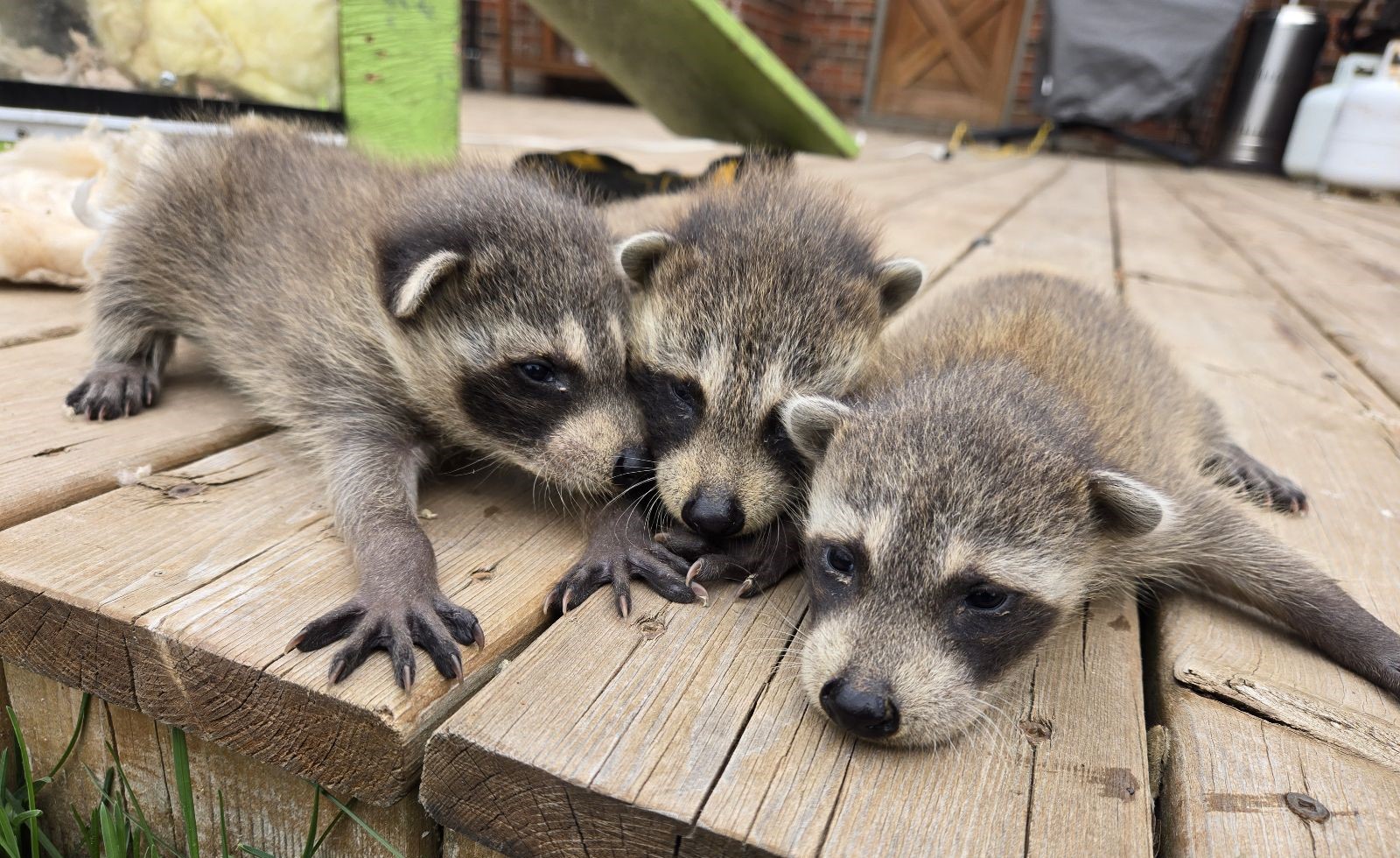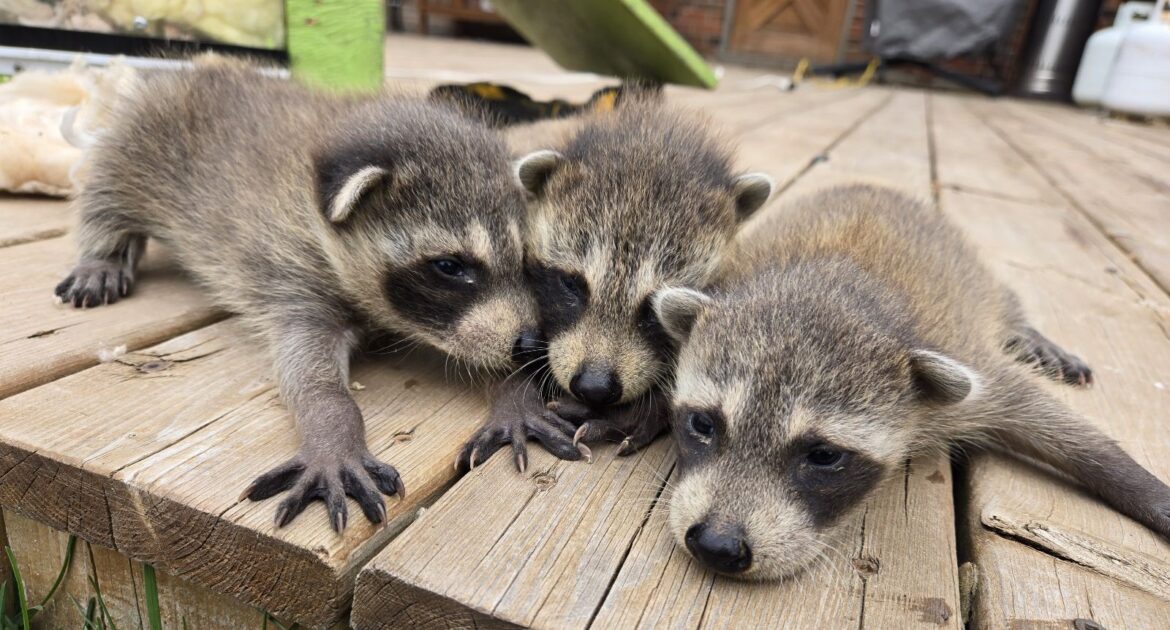Raccoons have long captivated our attention with their distinctive black facial masks, earning them nicknames like “bandits” and “masked marauders.” These clever animals, abundant throughout the Kitchener-Waterloo area, intrigue both wildlife enthusiasts and homeowners with their mysterious appearance. The raccoon mask serves crucial evolutionary and biological functions that have helped these adaptable mammals thrive in diverse environments.
At Skedaddle Humane Wildlife Control, we’ve spent over three decades studying and working with raccoons across Canada. Just as the Grand River winds through our community, connecting diverse ecosystems, understanding raccoon behaviours creates important connections between humans and wildlife. This knowledge helps us develop more effective, humane approaches to managing these intelligent creatures when they venture too close to our homes.
Let’s explore the fascinating science behind raccoon facial markings, uncover the raccoon mask purpose, and examine how these distinctive features have shaped cultural perceptions of raccoons throughout history.
The Science Behind Raccoon Facial Markings
The raccoon’s iconic black mask isn’t just for show; it serves several crucial biological functions that have evolved over thousands of years to help these mammals survive and thrive.
Enhanced Night Vision
One primary function of the raccoon mask is to reduce glare and enhance night vision, similar to how athletes apply black grease under their eyes during daytime games.
- Light Absorption: The dark fur around raccoons’ eyes absorbs incoming light that might otherwise reflect into their eyes and impair vision.
- Contrast Enhancement: The mask creates better visual contrast in low-light conditions, helping these animals spot movement and identify prey more effectively.
- Reduced Glare: When raccoons are near water, a common hunting ground, the mask minimizes reflection from the water’s surface into their eyes.
This visual adaptation is crucial since raccoons are primarily nocturnal, foraging and hunting after sunset when their mask gives them a significant advantage over prey.
Facial Recognition and Communication
The raccoon mask also plays a role in social communication among raccoons themselves.
Individual Identification: Each raccoon’s mask has subtle differences in pattern and shape that may help them recognize individuals within their communities. This functions somewhat like facial recognition among humans, allowing raccoons to:
- Identify family members: Mother raccoons can recognize their kits, even when multiple litters mix.
- Recognize potential mates: Adult raccoons may use facial patterns to identify suitable partners.
- Establish territorial boundaries: Raccoons can remember which individuals belong in their area.
When these animals gather near food sources in the Kitchener-Waterloo region, especially near community spaces like Victoria Park, their facial recognition capabilities help maintain complex social structures.
Evolutionary Advantages of the Raccoon Mask
The distinctive facial markings of raccoons exemplify natural selection at work. Through generations of adaptation, these markings have provided numerous survival advantages.
Predator Deterrence and Disguise
Raccoon facial markings serve as a form of natural camouflage and potential warning to predators:
- Breaking Up the Face Outline: The contrast between the dark mask and lighter surrounding fur helps disrupt the outline of the raccoon’s face, making it harder for predators to spot them in dappled forest light.
- Mimicry Effect: Some biologists suggest the mask might create an intimidation effect, making raccoons appear larger or more threatening to potential predators.
Species Recognition
Why raccoons look like bandits might also be explained through the evolutionary biology concept of species recognition:
- Mate Selection: The distinctive mask helps these animals quickly identify members of their species for breeding purposes, preventing energy waste on unsuitable mates and maintaining genetic boundaries.
- Family Group Identification: In areas with high raccoon density, such as some neighbourhoods in Kitchener-Waterloo, the mask helps family groups recognize their own members, crucial during foraging expeditions.
Adaptation to Urban Environments
The raccoon mask has proven particularly advantageous as these animals have adapted to urban areas like our Kitchener-Waterloo communities:
- Enhanced Night Vision in Artificial Lighting: The mask helps them navigate the complex light patterns of urban settings, from streetlights to security lighting.
- Better Peripheral Vision: This allows raccoons to detect approaching threats while foraging in residential areas.
- Temperature Regulation: The dark fur around the eyes may absorb heat during cooler periods, helping maintain optimal temperature in sensitive facial areas.
Cultural and Mythological Significance of Raccoon Masks
The distinctive raccoon facial markings have inspired cultural interpretations and mythology across various civilizations, particularly among Indigenous peoples of North America.
Indigenous Perspectives and Folklore
Many Indigenous cultures viewed the raccoon’s mask as symbolically significant:
- Algonquin Traditions: Raccoons were often portrayed as trickster figures, with their masks representing their clever, secretive nature.
- Woodland Tribes: Some stories depict raccoons receiving their masks as a gift for helping other animals or as reminders of life lessons.
Symbol of Transformation: The mask is interpreted as representing the raccoon’s ability to transform or adapt, moving between different worlds – just as they navigate between forests, water, and now human settlements.
Modern Cultural Representations
In contemporary culture, the raccoon’s mask continues to shape our perceptions:
- Comic Book Inspirations: The character Rocket Raccoon from “Guardians of the Galaxy” draws on cultural associations between masked creatures and cunning.
- Wildlife Symbolism: Raccoons are often seen as embodiments of resourcefulness and adaptability in modern storytelling, with their masks serving as visual shorthand for intelligence and mischief.
- This cultural symbolism reflects our complex relationship with raccoons in communities like Kitchener-Waterloo, where we admire their adaptability while also struggling with their urban presence.
How Raccoon Masks Affect Human Perceptions
The distinctive facial markings of raccoons strongly influence human perceptions and interactions with these animals, often impacting both species.
The “Bandit” Association
The term “masked bandit” has become firmly attached to raccoons, shaping public perceptions:
- Mixed Emotions: The mask evokes both wariness and fascination, leading to complex human-raccoon relationships.
- Personification: We often attribute human-like qualities to these creatures because their masked faces appear more expressive and relatable than those of other wildlife.
Psychological Impact: Research suggests humans are naturally drawn to animals with facial features resembling masks or glasses, explaining part of the raccoon’s enduring appeal despite being problematic neighbours at times.
Conservation and Management Implications
How we perceive raccoon facial markings affects conservation and wildlife management approaches:
- Increased Empathy: The distinctive, appealing mask may generate greater public sympathy compared to other urban wildlife.
- Management Challenges: This empathy can complicate wildlife management when raccoons become bothersome in residential areas.
- Educational Opportunities: The fascination with their masks offers engagement opportunities for wildlife educators to teach about urban ecology.
At Skedaddle Humane Wildlife Control, we regularly observe how the raccoon’s charismatic appearance influences homeowners’ reactions when these animals invade attics or chimneys.
Raccoon Behaviour and Home Protection
Understanding why raccoons look like bandits provides insight into their behaviour patterns, which is essential for protecting your home from unwanted visitors.
How Mask-Enhanced Vision Affects Home Entry
Raccoons’ mask-enhanced night vision allows them to effectively:
- Find Weak Points: Their excellent vision helps identify vulnerable areas around homes, such as loose soffits or damaged roof vents.
- Navigate Dark Spaces: Once inside an area, their adaptations enable them to explore more efficiently.
Proactive Home Protection Strategies
Homeowners in the Kitchener-Waterloo area must remain vigilant against raccoons’ determined efforts to enter homes. Here are some actionable measures you can take:
- Regular Inspections: Conduct thorough inspections of your property to identify and seal possible entry points.
- Secure Trash Storage: Ensure waste bins are tightly sealed and situated in enclosed or elevated areas, minimizing enticing odours.
- Trim Tree Branches: Trim back tree branches that provide access to rooftops and potential entry points.
- Install Deterrents: Use motion-activated lights or ultrasonic devices to deter raccoons from approaching your property.
By taking these steps, combined with understanding their mask-enhanced capabilities, you can minimize the chance of unexpected raccoon visitors.
Contact Skedaddle for Safe Raccoon Control
As fascinating as raccoons are, their presence in urban environments like Kitchener-Waterloo requires careful management to prevent property damage and unnecessary conflict. If you are dealing with a raccoon incursion, it’s important to handle it humanely and professionally. Skedaddle Humane Wildlife Control offers safe and effective raccoon removal solutions tailored to your needs, ensuring the well-being of these intelligent animals and the safety of your home.
If raccoons have been causing havoc on your property, or if you wish to prevent their entry altogether, don’t hesitate to reach out to Skedaddle. Our team of experts is dedicated to providing humane and efficient wildlife control solutions that respect both the animals and your living environment. Contact us today for a consultation and keep your home raccoon-free.




